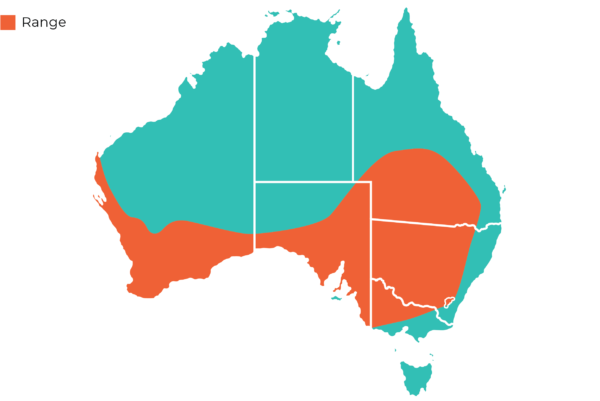Description
The Shingleback Lizard is a medium-sized lizard with a short thick tail that is used for storing fat. The tail resembles the shape of the head and works to confuse predators. The scales are dark and rough, resembling the appearance of the pine cone on top however, the underbelly is creamy coloured and smooth. It has short legs and its tongue is dark blue, almost purple.
Distribution
Shingleback Lizards are found from Shark Bay in Western Australia down and across the coast and interior through south-west South Australia and into the north eastern region where their range extends through Queensland's central south to around Longreach. Their range extends south on the western side of the Great Dividing Range through New South Wales and to the northern and western parts of Victoria. A pocket of Shingleback Lizards is also found between Carnarvon and Cape Range National Park on the central coast of Western Australia.

Lifespan
The average lifespan of a Shingleback Lizard is 20 years however they are thought to live potentially to 50 years.
Size
25 - 30 cm in length and weigh 600 - 900g.
Diet
Shingleback Lizards are primarily herbivorous living on a diet of flowers, berries and succulent leaves, however, they will opportunistically consume insects.
Habitat
The Shingleback Lizard inhabits dry sclerophyll forests, dry scrubland and grassland. They find shelter under fallen timber, leaf litter, and grasses when not active.
Breeding
Shingleback Lizards are highly monogamous, seeking out the same partner year after year. When breeding begins in spring, the male will seek out the female by the scent trails she leaves behind. Although the female can have 1 to 4 live young, which are rather large in comparison to mum, on average she will give birth to only 2.